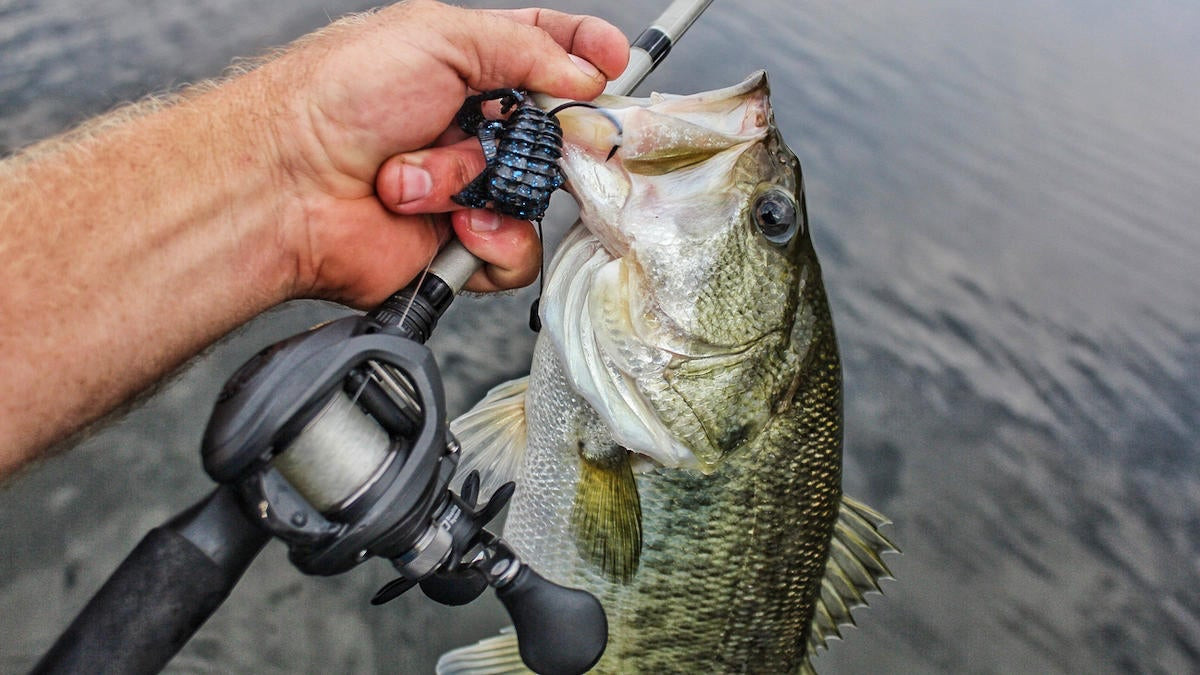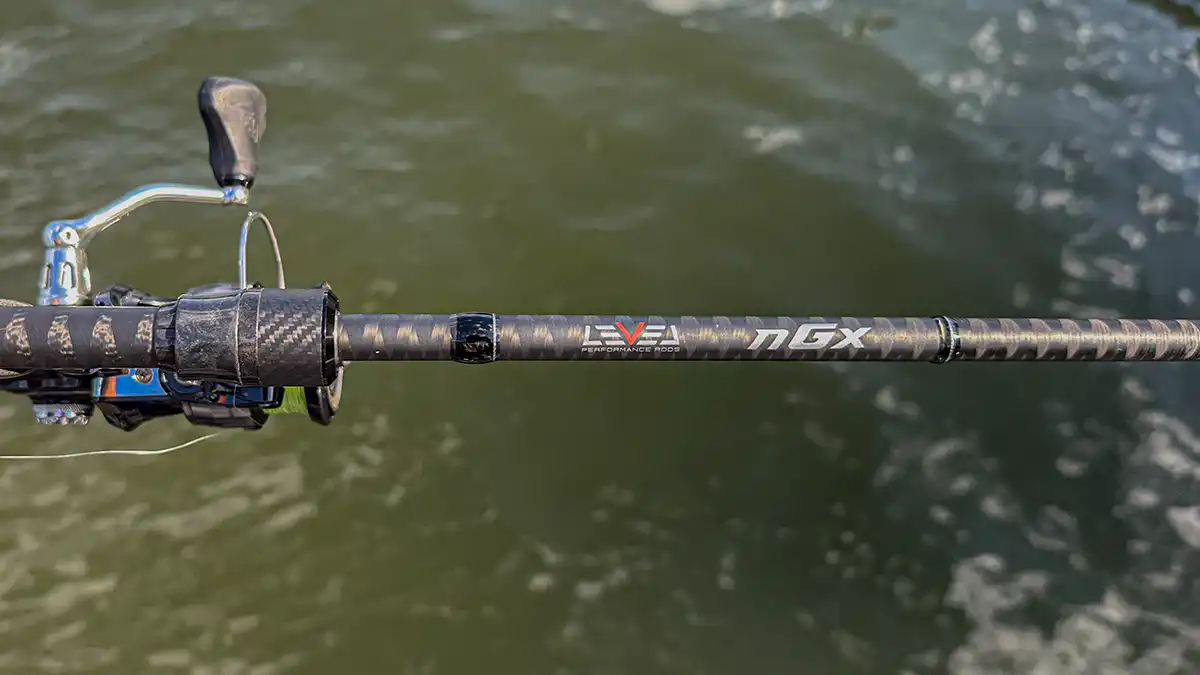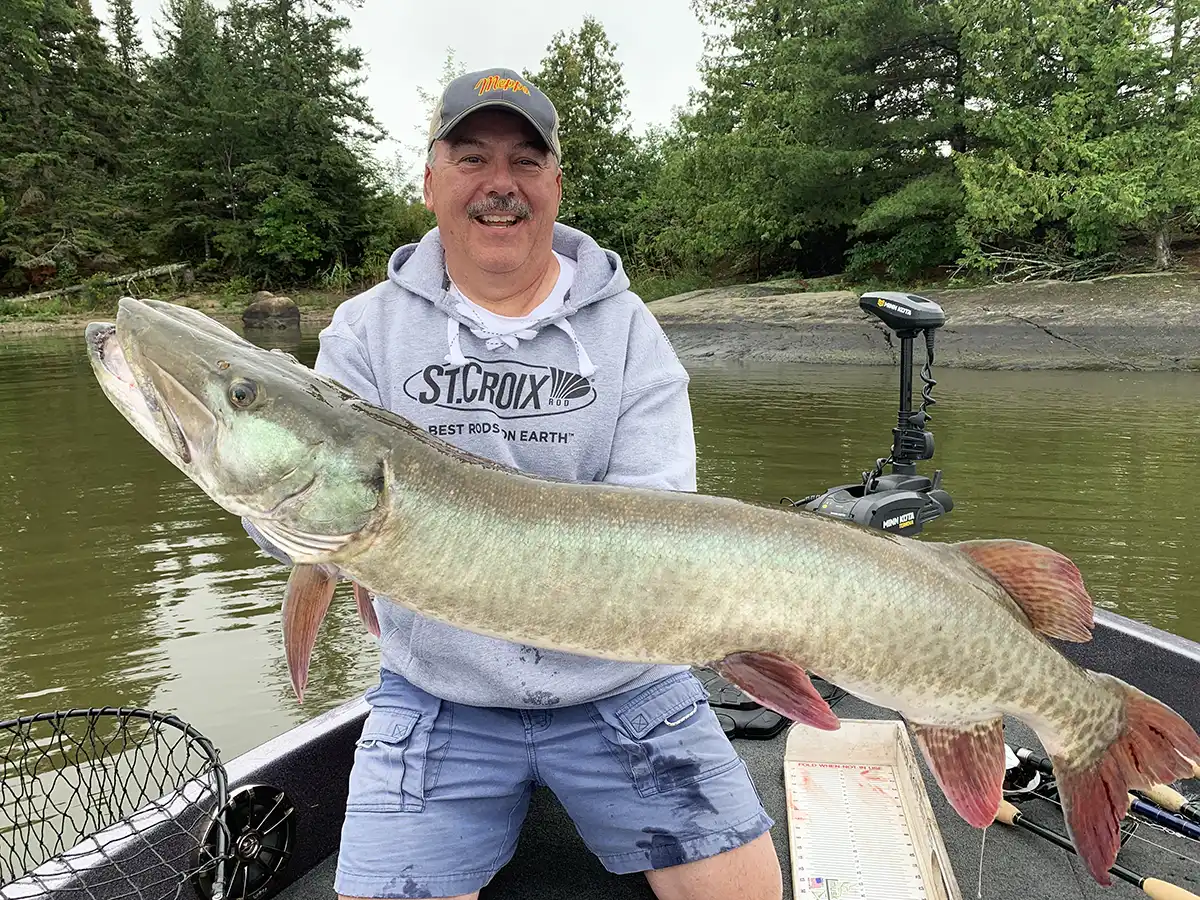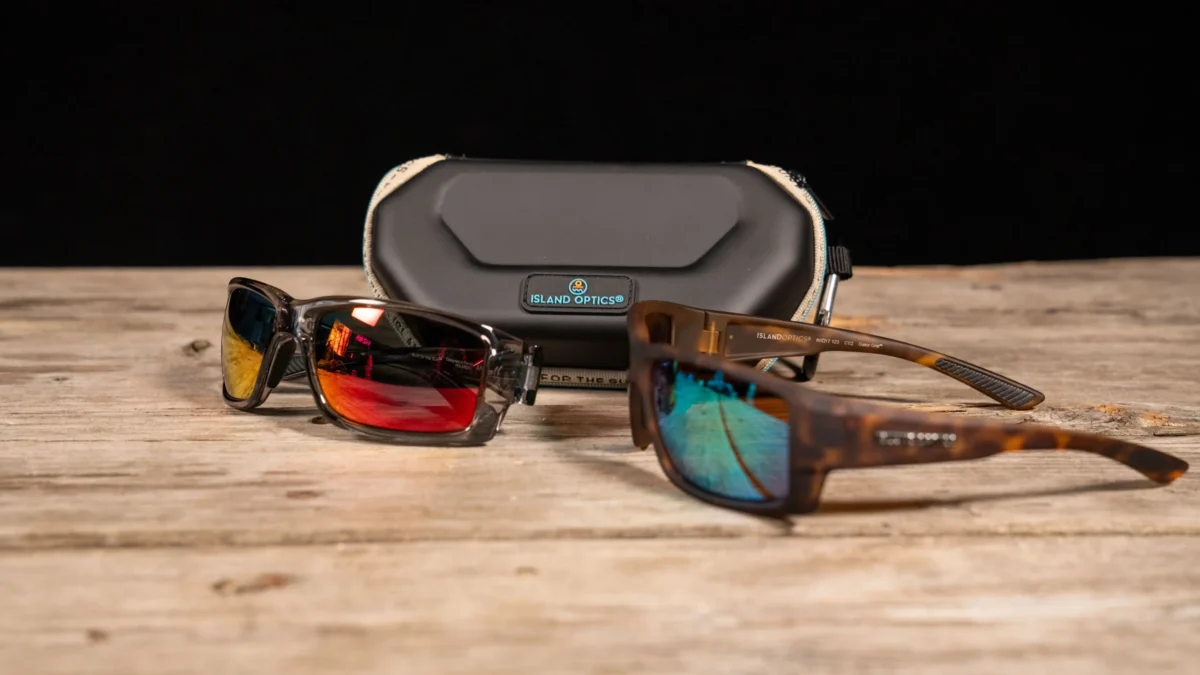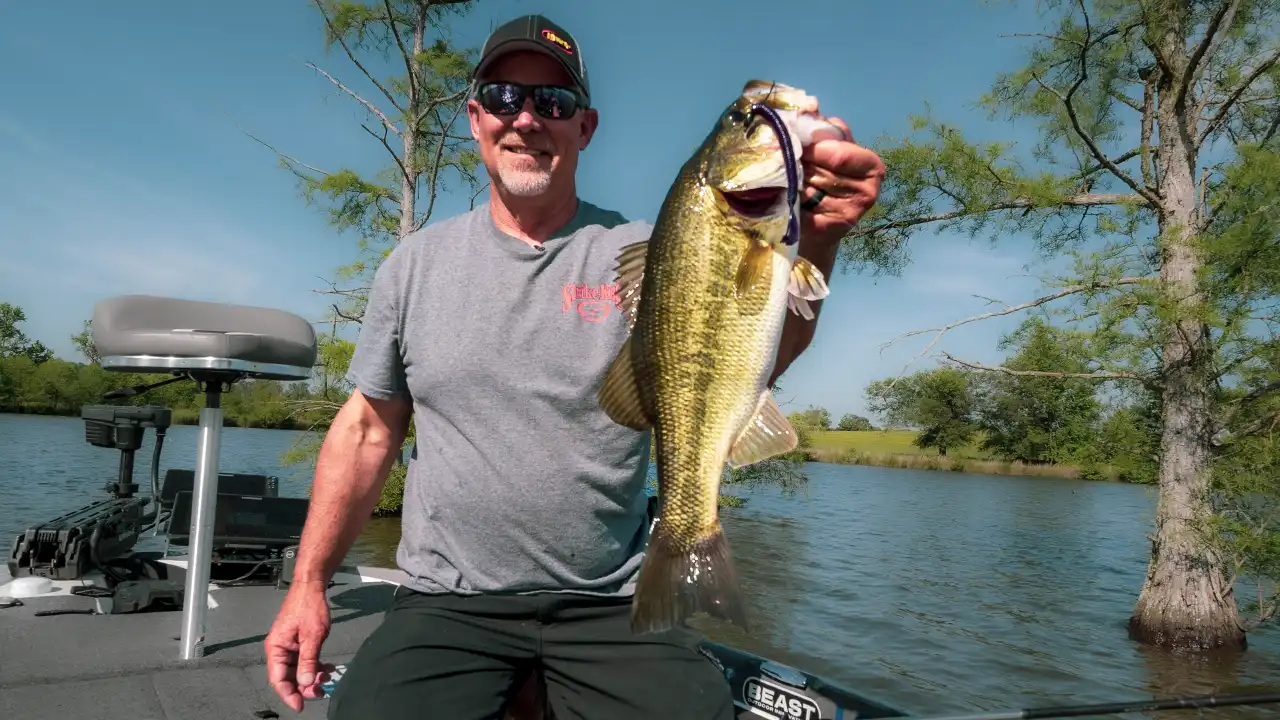There’s a fair amount of content out there for co-anglers and other anglers who find themselves fishing out of the back of the boat from time to time. But most of it revolves around spinning gear, Ned rigs, shaky heads, wacky rigs and other finesse fishing tactics.
I sold my boat a couple months ago so I’ve been riding along with my dad and a couple buddies while I save up money to buy another boat this fall. It’s the first time in a long time that I’ve had to be conscientious of the gear I take out on the water. I’m used to having the whole boat to work with and now I need to narrow it down quite a bit and leave the rest at home.
During this process, I’ve found three baitcaster combos that always make the trip. Certainly a couple others come in an out of the rotation. If I’m going somewhere with a lot of mats, I’ll have my 7-foot, 8-inch extra heavy punching rod. If I’m going somewhere with a lot of cranking potential, I’ll have a couple cranking rods with me.
There are three baitcasters, however, that I’ll take every time and they can carry the majority of the workload all the time. Let’s look at those now.
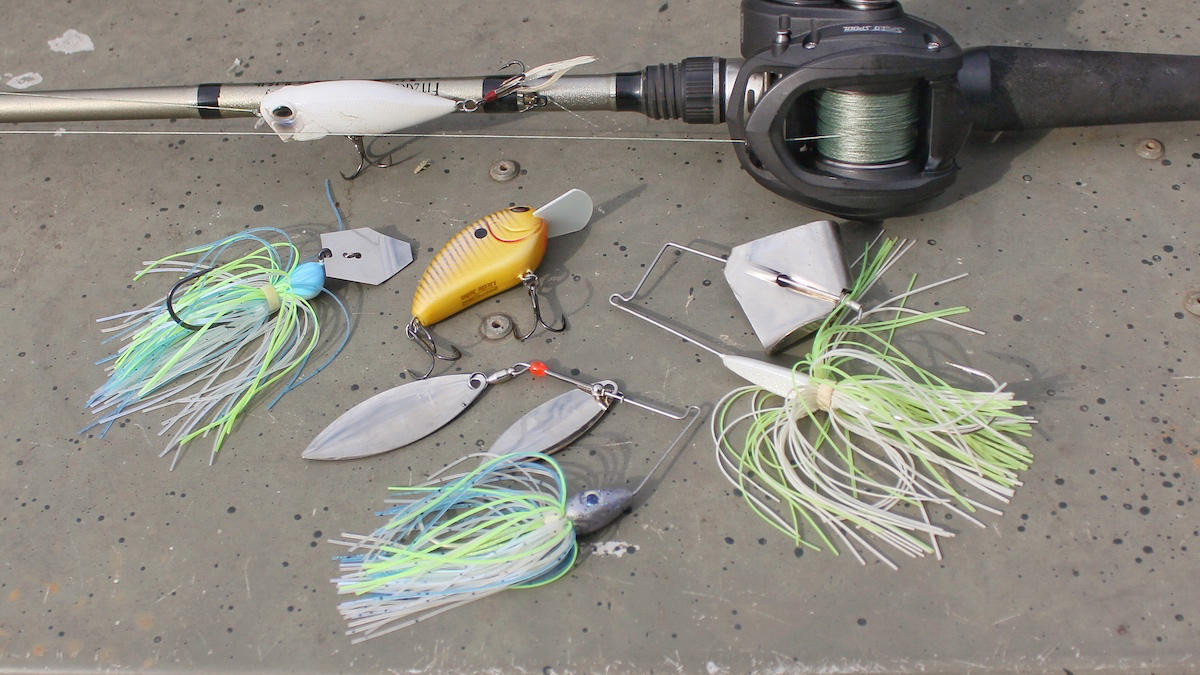
7-foot medium heavy
Probably the most popular size and action casting rod ever made, a 7-foot medium-heavy action fishing rod can do a lot; everything from throwing a topwater on 30-pound braid to fishing a shaky head on 10-pound fluorocarbon. This size rod is so versatile in fact, there are times where I’ll take two or even three of these on the same trip.
If I’m taking multiples of this setup, I like to have one rigged with 30-pound braid for walking topwaters, poppers, buzzbaits, spinnerbaits and Texas rigs if the water color allows for it. Then another with 12- or 15-pound fluoro that can handle things like a small swimbait on a jighead, a spoon, spinnerbait or worm in clearer water.
If I’m only allowed a few rods, one of these will definitely be in the mix and I’ll usually carry two reels for it, one with braid and one with fluoro so I can swap them out throughout the day if the boater’s plans change. And I keep it pretty simple with the gear ratios. Again, we’re talking about having a combo that can be used for a wide variety of tactics, so something in the 7:1 range is what I’ll have, such as the 7.5:1 Lew’s Speed Spool LFS.

7-foot heavy
Moving up only in action from the first rod, the stiffer 7-foot heavy is the next rod I’ll pull from the arsenal.
You’ll find you can use the 7-foot heavy for a lot of the same baits as the 7-foot medium-heavy action but the decision to step up or not will be based on three things: cover, depth and size of the fish you’re pursuing.
For instance, if I’m fishing a Texas rig in two feet of water with sporadic stumps, I’ll likely stick with the 7-foot medium-heavy action. If I’m fishing the same bait in a brush pile in 15 feet of water, I’ll swamp to the 7-foot heavy. You’ll need that extra power to get a good hookset and pull the fish out of the cover.
If you know you’re on a lake with a lot of small fish and a big bite is rare, just stick with the medium heavy. Most baits are easier to cast with the medium-heavy action than they will be with a heavy-action rod. Since the two rods are the same length, the stronger rod has to sacrifice the flex in its tip to achieve that heavy action. But if you know you’re fishing around a lot of 3- to 4-pounders, go ahead and move up to that 7-foot heavy and just do the best you can with your casting. Remember, don’t go bear hunting with a switch.
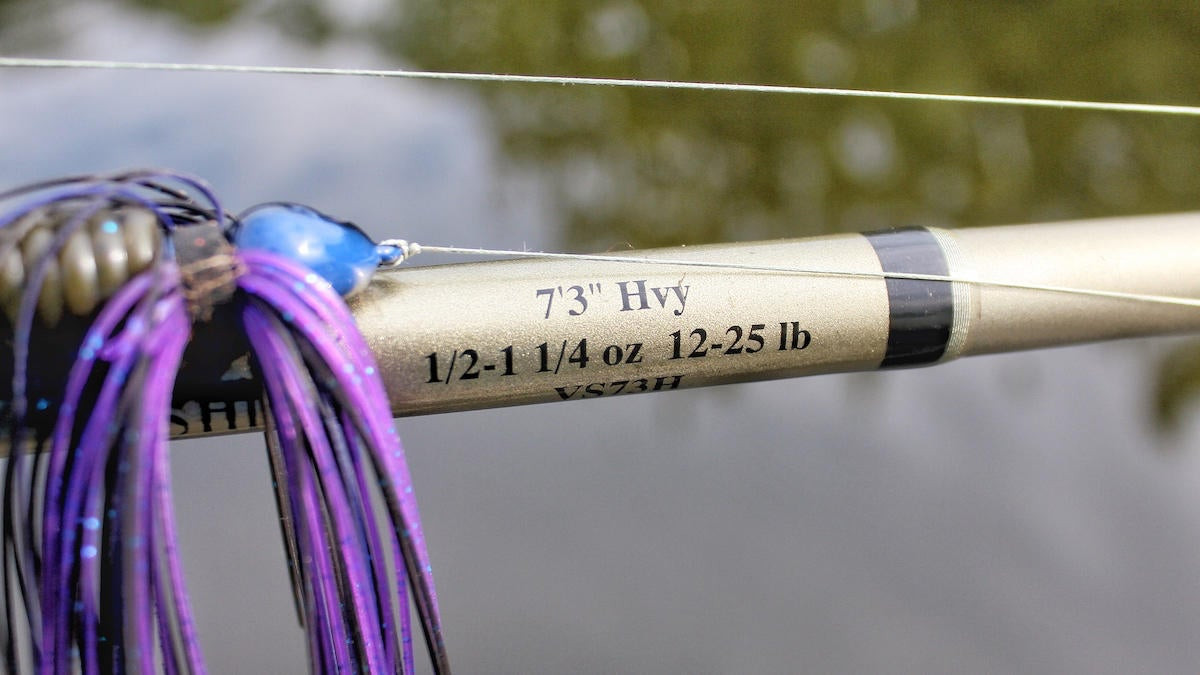
7-foot, 3-inch heavy
Although I tend to use the 7-foot medium-heavy action most frequently, there are plenty of days when I’ll use a 7-foot, 3-inch heavy for the large majority of the trip. In situations where I’m frogging for instance, this is the rod I’ll stick with. I’ll admit, you can throw a frog on a bunch of different rods. But I’m almost always fishing a frog around dense cover and when I’m not, I’m still targeting big fish. So the hollow body frog knows only one rod in my world-the 7-foot, 3-inch heavy-action Fitzgerald Vursa Series casting rod.
This rod is also great for swimming a jig in sparse to thick vegetation and it makes a good pitching and flipping rod for baits up to 3/4-ounce. Similar to the 7-foot medium heavy, I like to have two reels spooled up for this rod if I’m only allowed three rods. Instead of the Lew’s LFS, which is a great reel for lighter baits and less strenuous applications, I’ll go with the Lew’s Super Duty Speed Spool LFS to beef things up a bit.
It seems like Lew’s comes out with a new model number for these two reels every year, but these two and their predecessors have made up most of my arsenal for several years now. For the beefier Super Duty on the 7-foot, 3-inch heavy, I’ll usually go with the 8.3:1 gear ratio since I’m wanting to cover water with most of the baits I fish with that combo.
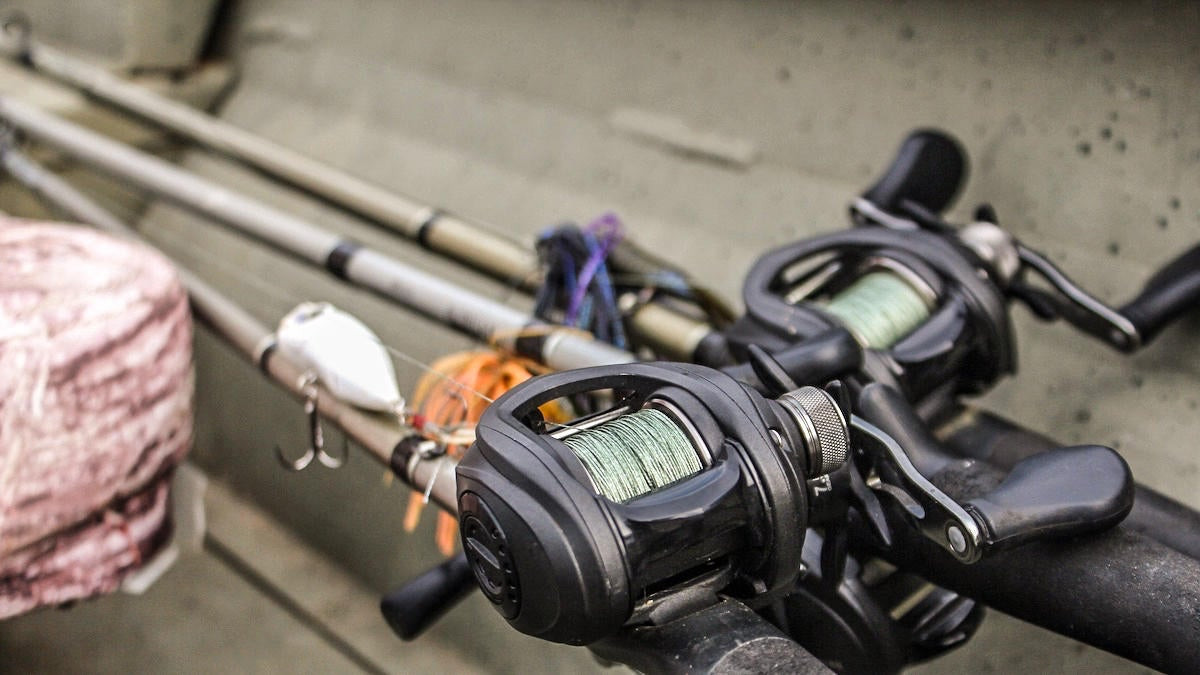
In conclusion
If you’re going to be fishing from the back of the boat anytime soon, those are the three rods I’d suggest having in the lineup. Naturally, there will be some situations where you’ll need to change things up a bit for specific situations, but by and large, these three will give you a lot of options in the back of the boat.
Remember that each bait doesn’t necessarily align with just one of these rods. Instead, base your rod selection on the cover, depth and big bass potential of the area you’re fishing and you should be on the right track to a good day on the water.


